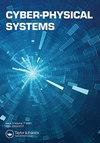An Optimal Intrusion Detection System using GWO-CSA-DSAE Model
Q2 Engineering
引用次数: 9
Abstract
ABSTRACT In the high demand of the cloud computing environment, intrusion detection in a cloud network playing a big role in maintaining the faith of the client(s). Due to the increasing complexity of the cloud environment, the existing approaches which use the conventional neural networks are not able to utilise the relevant information from the network traffic, which leads to a low detection rate. This reduces the stability of the existing approaches in this changing environment. In this paper, an anomaly-based cloud intrusion detection system (IDS) is proposed for finding the intrusions in a cloud network. The proposed system uses a hybrid metaheuristic algorithm for feature selection and a deep learning approach for classification. For feature selection, grey wolf optimisation (GWO) is hybrid with a crow search algorithm (CSA), which extracts relevant features from the cloud network connection to be processed more effectively in the deep learning classifier section. A deep sparse auto-encoder (DSAE) is employed for the classification purpose. For the performance comparison, the considered metrics are accuracy, precision, recall or detection rate (DR), and F1 Score. Three publically well-known available datasets namely NSL-KDD, UNSW-NB15, and CICIDS 2017 have been considered for analysing the performance of the proposed GWO-CSA-DSAE model for intrusion detection in a cloud network. The experimental results of the proposed model have been compared with the results of existing recent approaches in the case of binary classification and multi-class classification. It is found that GWO-CSA-DSAE model is better for intrusion detection, which is the proposed model for intrusion detection in a cloud network.基于GWO-CSA-DSAE模型的最优入侵检测系统
在对云计算环境的高要求下,云网络中的入侵检测对于维护客户端的信任起着重要的作用。由于云环境的复杂性日益增加,现有的基于传统神经网络的方法无法利用网络流量中的相关信息,导致检测率较低。这降低了现有方法在不断变化的环境中的稳定性。本文提出了一种基于异常的云入侵检测系统(IDS),用于发现云网络中的入侵。该系统使用混合元启发式算法进行特征选择,并使用深度学习方法进行分类。在特征选择方面,将灰狼优化(GWO)与乌鸦搜索算法(CSA)相结合,从云网络连接中提取相关特征,在深度学习分类器部分进行更有效的处理。采用深度稀疏自编码器(deep sparse auto-encoder, DSAE)进行分类。对于性能比较,考虑的指标是准确性、精度、召回率或检测率(DR)和F1 Score。考虑了三个众所周知的可用数据集,即NSL-KDD, UNSW-NB15和CICIDS 2017,以分析所提出的用于云网络入侵检测的GWO-CSA-DSAE模型的性能。在二元分类和多类分类的情况下,将该模型的实验结果与现有方法的结果进行了比较。结果表明,GWO-CSA-DSAE模型更适合于云网络中的入侵检测,提出了云网络中的入侵检测模型。
本文章由计算机程序翻译,如有差异,请以英文原文为准。
求助全文
约1分钟内获得全文
求助全文

 求助内容:
求助内容: 应助结果提醒方式:
应助结果提醒方式:


